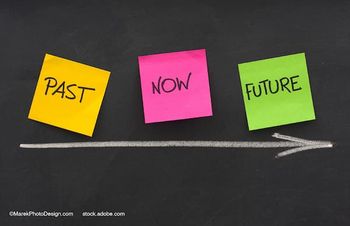
Bilateral surgery shows promise for Marcus-Gunn jaw winking synkinesis
Bilateral frontalis suspension combined with levator transection and transposition appears to be a better technique for treatment of Marcus-Gunn jaw winking synkinesis, suggest results of a large case series reviewed for this rare condition.
Keypoints:
Philadelphia-Bilateral frontalis suspension combined with levator transection and transposition is an effective technique for treatment of Marcus-Gunn jaw winking synkinesis (MGJWS), a rare congenital ptosis that includes a winking motion of the affected eyelid corresponding to movement of the jaw. A unilateral technique, however, also may provide good results. This is according to a retrospective review conducted by Hakan Demirci, MD, a clinical instructor at Thomas Jefferson University and a staff physician in oncology at Wills Eye, Philadelphia, and his co-authors.
"Bilateral-and in some cases unilateral-frontalis suspension with transection and transposition of the involved levator muscle are effective surgical techniques for MGJWS," Dr. Demirci said. "Bilateral surgery provided better relative upper eyelid height in the primary gaze and downgaze than unilateral surgery," he added, referring to the results of a recent case series in which both approaches were used.
Dr. Demirci and his co-authors, Christine C. Nelson, MD, and Bartley R. Frueh, MD, both from the Department of Ophthalmology and Visual Sciences, W.K. Kellogg Eye Center, University of Michigan, Ann Arbor, reviewed a large case series in the literature to date. They conducted the retrospective review while Dr. Demirci was a fellow at that institution.
Disagreement exists about the best therapeutic approach, in part because of the infrequency of cases of MGJWS, and the study was undertaken to assess the merits of the different techniques, he said.
In two previous studies of bilateral frontalis suspension after excision of bilateral levator muscles, patient outcomes were good. In a review of 13 patients, complete elimination of jaw winking occurred in 85% of cases; equal palpebral fissure and symmetrical contour also were observed in 85% of cases. A separate review of 16 patients, published in 1999, found that good marginal reflex distance and symmetry were present in 63% of cases and fair distance and symmetry in 37%.
Case series
In their study, Dr. Demirci and colleagues reviewed the cases of 47 patients in whom MGJWS had been diagnosed between 1970 and 2006. Thirty of the subjects had undergone surgical intervention. In 87% of these patients, the jaw wink preoperatively was between 2 and 4 mm; in the remaining 13%, jaw winking was between 5 and 8 mm.
The average age of the surgical patient group was 7.5 years; 20 were male and 10 female. Some of the patients had associated eye problems, including exotropia or esotropia (34%), amblyopia (23%), and vertical strabismus (22%).
Twenty-six of the patients underwent bilateral frontalis suspension, and four had a unilateral procedure. After surgery, jaw winking resolved in all patients and improved in one patient.
Postoperatively, mean eyelid excursion improved from 8 to 5 mm, and upper eyelid margin to mid-pupil distance improved from –0.1 to 1 mm. Lagophthalmos was not present in any patients preoperatively but occurred up to 2 mm in six patients (20%) after surgery. A trace of superficial punctate keratopathy was observed in nine patients (30%) postoperatively.
In the 26 patients who underwent bilateral frontalis suspension, the relative upper eyelid height at primary gaze was within 1 mm in 88% of cases. The height was symmetric in 42% of cases, 0.5 to 1 mm in 46% of cases, and >1 mm in 12%. The relative upper eyelid height at downgaze was within 1 mm in 88% of cases, symmetric in 23%, 0.5 to 1 mm in 65% of cases, and >1 mm in 12%.
In the four patients who underwent unilateral frontalis suspension, the relative upper and lower eyelid heights were within 1 mm in 50% of cases and >1 mm in the remaining 50%.
Long-term follow-up (mean 50 months) showed relatively few complications. Recurrence of ptosis was seen in 21% of patients, eyelash ptosis in 10%, loss of eyelid crease in 10%, and entropion in 3%.
Newsletter
Don’t miss out—get Ophthalmology Times updates on the latest clinical advancements and expert interviews, straight to your inbox.



















































.png)


